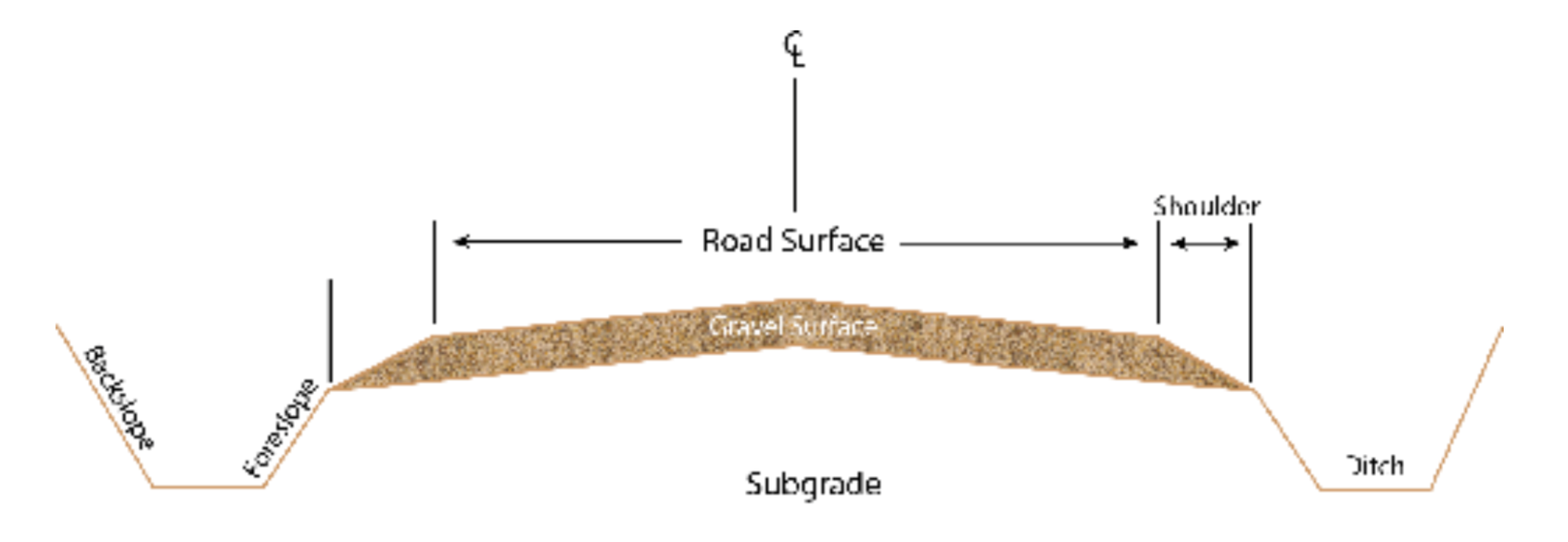It's road grading season!
Correct grading, water drainage, shoulderwork and ditching - and a skilled grader operator - are more important than ever.

Mud season came and went uneventfully this spring. Now the dirt roads are drying out - let the grading begin! There's plenty to do on Thetford's 49 miles of dirt roads.
The familiar yellow machine, a John Deere 772GP grader, is typically driven by Neil Rich. He's been driving graders for forty years and knows his stuff. We are lucky that he came to us from Norwich about three years ago.
The grader itself is an impressive, six-wheeled vehicle almost 30 ft long, with the roof of the cab 10 ft off the ground. It weighs 45,000 lbs. Thetford's grader has about 8,000 work-hours on it, and some towns would have replaced it by now. Nonetheless, the town just purchased new grader tires, a significant investment as they cost from $650 each and upwards.
Inside the cab an array of control buttons and joysticks around the steering wheel allow the grader operator to rotate and tilt the 12 ft long "plow" of the grader, technically the moldboard. The business part of the moldboard is a wear-resistant, high-carbon steel blade attached along its edge. This is what scrapes and shapes the road surface. The body of the grader is articulated, allowing this long machine to make reasonable turns, and also to facilitate certain grading maneuvers.

In a nutshell the purpose of grading dirt roads is simple - it is to drain the water off the road. Standing water seeps into the road gravel and causes both the surface and the road bed to become soft and weak. Once this happens vehicle tires make ruts in the surface and deform the bed, allowing more standing water and further structural deterioration.

A correctly graded road sheds water evenly in a sheet. While it is easy to imagine that a nicely rounded road surface would do this, the best water-shedding profile is a crowned center with two flat surfaces sloping gently away on either side. One of many skills of the grader operator is to achieve this shape without the slopes being too steep. Bear in mind that an absorbent dirt road requires a more pronounced crown than an impervious paved road. However if the slope away from the crown is too steep drivers find their vehicle tends to slide towards the ditch. To avoid this they may choose to straddle the center, even on a wide road.
Shoulders and ditches are also critical to good drainage. However the shoulder is a compromise between a slope to drain water away and a safe place for a car to pull over. A shoulder that is too low is a safety hazard. Ideally road shoulders should be kept mowed to facilitate their correct grading. Many dirt roads in Thetford are lined with picturesque and historic stone walls and trees, making shoulder and ditch maintenance difficult.

Another problem is the build-up of a ridge or berm of road material at the point between the road and the shoulder. This results from traffic loosening road gravel which gets tossed to the road edge and piled in the middle. Heavy vehicles take a particular toll on dirt roads, their weight makes compression ruts in the travel lane while squeezing the shoulder material upwards. Poor grading may also leave roadside berms. These berms are damaging because they allow water retention that weakens the road, and they channel runoff along the road causing erosion. One of the goals of grading is to move this material back into the road and mix it into the rest of the road surface. With the moldboard set to the correct angle and tilt, the retrieved material is rolled along the length of the moldboard by the forward movement of the grader, and is mixed with gravel being scraped from the road surface. The moldboard also levels and smooths it all in the process.
Shoulders drain into ditches that need to be cleared, a process known as grader “pulling” of the clogging material, and re-graded periodically. Gravel laid down for winter traction migrates into ditches, and they also accumulate fallen tree branches and displaced road gravel. Ditches should not contain standing water as this too seeps into the road foundation and weakens it.
Dirt roads often develop a "washboard" surface of small ridges, perpendicular to the direction of travel. Graders are sometimes blamed, but in reality peoples' driving habits are the culprit. Hard acceleration or braking on curves, hills and at intersections is a major factor. Lack of moisture in the gravel and no crown on the road contribute to this annoying condition.
If the grader were creating washboarding the ridges would be on a diagonal, corresponding to the angle of the moldboard across the travel lane, and they would be widely spaced. Such ridges are caused by "bouncing" of the grader, which happens if it is moving too fast. A speed of 3-5 mph is generally recommended to maintain grader stability, though moisture, road gravel composition and subgrade strength are all factors that the grader operator considers.
Many of Thetford's dirt roads were built piecemeal from old trails without a good base and even across wet areas of inherently unstable soils. If they used gravel it was not designed to support the weight of modern vehicles. In the face of these challenges Neil is doing a marvelous job. Dirt roads were originally intended to carry light amounts of passenger vehicles. But the volume and nature of the traffic has changed. There is more housing development on dirt roads and passenger vehicles have grown larger and heavier with higher tire pressures. There's been an increase in commercial vehicles like fuel delivery and garbage trucks, plus more on-line shopping and home deliveries. Neil observes that the dirt roads in the worst condition, like New Boston and Five Corners, are those with the heaviest use. Correct grading, water drainage, shoulderwork and ditching - and a skilled grader operator - are more important than ever.
Photo credit: Li Shen
